Jeep Compass vs Volvo XC90 – Performance, range & efficiency compared
Two cars, one duel: Jeep Compass meets Volvo XC90.
Which one wins in performance, efficiency and value for money? Find out now!
Here’s where it gets real: The technical differences in detail
Costs and Efficiency: Price and efficiency are key factors when choosing a car – and this is often where the real differences emerge.
Jeep Compass has a decisively advantage in terms of price – it starts at 34200 £, while the Volvo XC90 costs 69800 £. That’s a price difference of around 35562 £.
Fuel consumption also shows a difference: the Jeep Compass manages with 2 L and is therefore significantly more efficient than the Volvo XC90 with 3.50 L. The difference is about 1.50 L per 100 km.
As for range, the Jeep Compass performs convincingly better – achieving up to 500 km, about 429 km more than the Volvo XC90.
Engine and Performance: Under the bonnet, it becomes clear which model is tuned for sportiness and which one takes the lead when you hit the accelerator.
When it comes to engine power, the Volvo XC90 has a convincingly edge – offering 455 HP compared to 240 HP. That’s roughly 215 HP more horsepower.
In acceleration from 0 to 100 km/h, the Volvo XC90 is noticeable quicker – completing the sprint in 5.40 s, while the Jeep Compass takes 7.30 s. That’s about 1.90 s faster.
In terms of top speed, the Jeep Compass performs hardly perceptible better – reaching 200 km/h, while the Volvo XC90 tops out at 180 km/h. The difference is around 20 km/h.
There’s also a difference in torque: the Volvo XC90 pulls convincingly stronger with 709 Nm compared to 345 Nm. That’s about 364 Nm difference.
Space and Everyday Use: Beyond pure performance, interior space and usability matter most in daily life. This is where you see which car is more practical and versatile.
Seats: Volvo XC90 offers clearly perceptible more seating capacity – 7 vs 5.
In curb weight, the Jeep Compass is clearly perceptible lighter – 1575 kg compared to 2080 kg. The difference is around 505 kg.
In terms of boot space, the Jeep Compass offers convincingly more room – 550 L compared to 302 L. That’s a difference of about 248 L.
In maximum load capacity, the Volvo XC90 performs clearly perceptible better – up to 1856 L, which is about 469 L more than the Jeep Compass.
When it comes to payload, Volvo XC90 distinct takes the win – 710 kg compared to 470 kg. That’s a difference of about 240 kg.
All in all, the Jeep Compass shows itself to be is largely superior and secures the title of DriveDuel Champion.
It impresses with the more balanced overall package and proves to be the more versatile companion for everyday use.
Jeep Compass
The Jeep Compass combines a rugged aesthetic with modern sophistication, making it a standout choice in the compact SUV segment. Its robust design is complemented by a comfortable interior that offers ample space and cutting-edge technology for a seamless driving experience. Whether tackling urban environments or venturing off-road, the Compass provides versatility and reliability, embodying the adventurous spirit synonymous with the Jeep brand.
details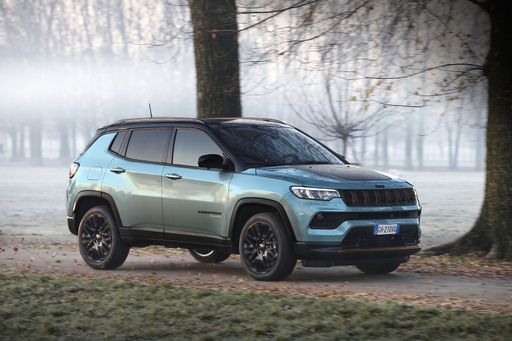 @ media.stellantis.com
@ media.stellantis.com
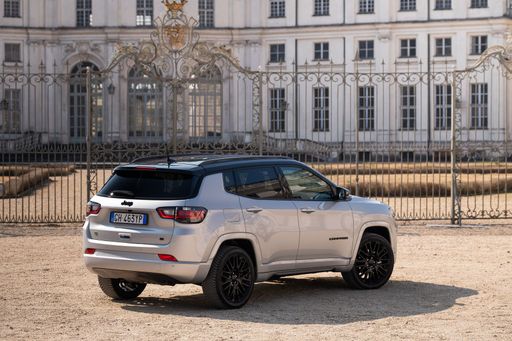 @ media.stellantis.com
@ media.stellantis.com
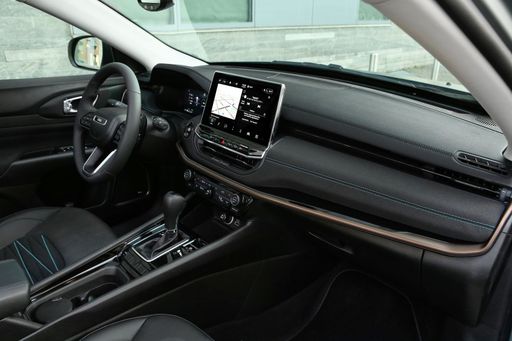 @ media.stellantis.com
@ media.stellantis.com
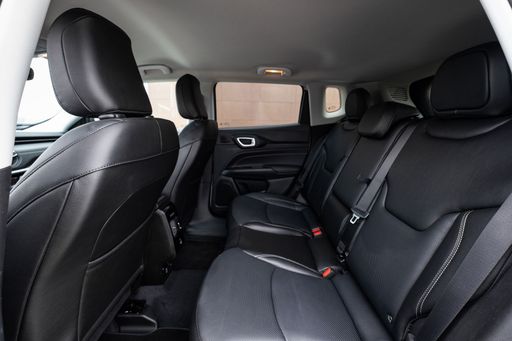 @ media.stellantis.com
@ media.stellantis.com
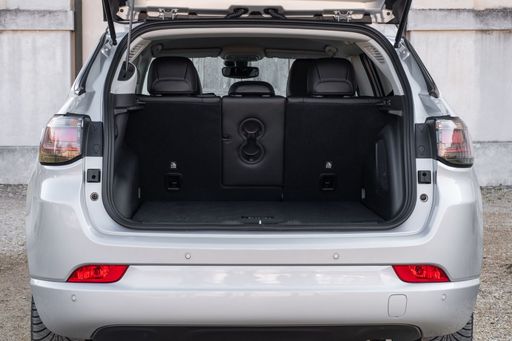 @ media.stellantis.com
@ media.stellantis.com
Volvo XC90
The Volvo XC90 stands out with its elegant Scandinavian design, seamlessly blending luxury with versatility. Inside, it offers a spacious and meticulously crafted interior, showcasing high-quality materials and advanced technology. The vehicle provides a comfortable and smooth driving experience, making it a popular choice for families and long journeys.
details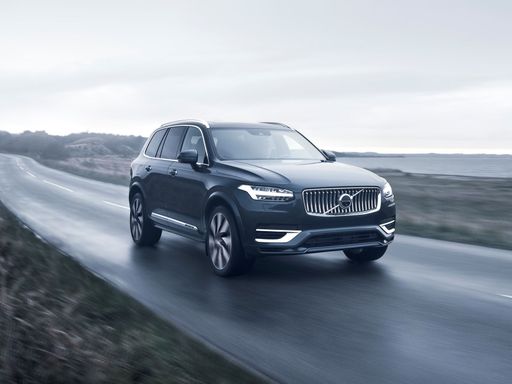 @ media.volvocars.com
@ media.volvocars.com
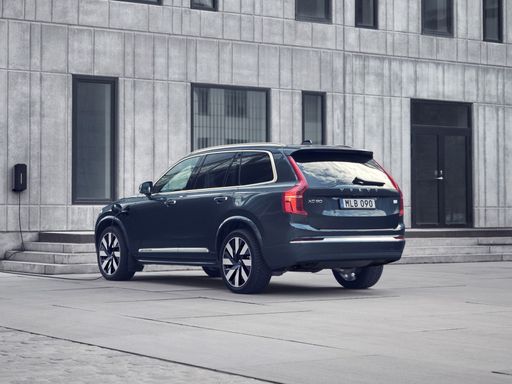 @ media.volvocars.com
@ media.volvocars.com
 @ media.volvocars.com
@ media.volvocars.com
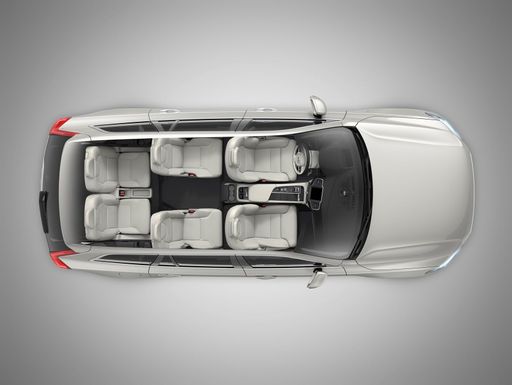 @ media.volvocars.com
@ media.volvocars.com
 @ media.volvocars.com
@ media.volvocars.com

|

|
|
|
|
Costs and Consumption |
|
|---|---|
|
Price
34200 - 46900 £
|
Price
69800 - 84600 £
|
|
Consumption L/100km
2 - 5.9 L
|
Consumption L/100km
3.5 - 8.5 L
|
|
Consumption kWh/100km
17.50 kWh
|
Consumption kWh/100km
-
|
|
Electric Range
36 - 500 km
|
Electric Range
71 km
|
|
Battery Capacity
74 kWh
|
Battery Capacity
14.70 kWh
|
|
co2
0 - 133 g/km
|
co2
79 - 191 g/km
|
|
Fuel tank capacity
36 - 55 L
|
Fuel tank capacity
71 L
|
Dimensions and Body |
|
|---|---|
|
Body Type
SUV
|
Body Type
SUV
|
|
Seats
5
|
Seats
7
|
|
Doors
5
|
Doors
5
|
|
Curb weight
1575 - 2198 kg
|
Curb weight
2080 - 2297 kg
|
|
Trunk capacity
420 - 550 L
|
Trunk capacity
262 - 302 L
|
|
Length
4404 - 4552 mm
|
Length
4953 mm
|
|
Width
1819 mm
|
Width
1923 mm
|
|
Height
1629 - 1675 mm
|
Height
1771 mm
|
|
Max trunk capacity
1230 - 1387 L
|
Max trunk capacity
1816 - 1856 L
|
|
Payload
465 - 470 kg
|
Payload
653 - 710 kg
|
Engine and Performance |
|
|---|---|
|
Engine Type
Petrol MHEV, Plugin Hybrid, Electric
|
Engine Type
Petrol MHEV, Plugin Hybrid
|
|
Transmission
Automatic
|
Transmission
Automatic
|
|
Transmission Detail
Dual-Clutch Automatic, Automatic Gearbox, Reduction Gearbox
|
Transmission Detail
Automatic Gearbox
|
|
Drive Type
Front-Wheel Drive, All-Wheel Drive
|
Drive Type
All-Wheel Drive
|
|
Power HP
130 - 240 HP
|
Power HP
250 - 455 HP
|
|
Acceleration 0-100km/h
7.3 - 10.3 s
|
Acceleration 0-100km/h
5.4 - 7.7 s
|
|
Max Speed
180 - 200 km/h
|
Max Speed
180 km/h
|
|
Torque
230 - 345 Nm
|
Torque
360 - 709 Nm
|
|
Number of Cylinders
4
|
Number of Cylinders
4
|
|
Power kW
96 - 177 kW
|
Power kW
184 - 335 kW
|
|
Engine capacity
1199 - 1469 cm3
|
Engine capacity
1969 cm3
|
General |
|
|---|---|
|
Model Year
2024 - 2025
|
Model Year
2024 - 2025
|
|
CO2 Efficiency Class
D, B, A
|
CO2 Efficiency Class
G, B
|
|
Brand
Jeep
|
Brand
Volvo
|
What drivetrain options does the Jeep Compass have?
The Jeep Compass is available as Front-Wheel Drive or All-Wheel Drive.
The prices and data displayed are estimates based on German list prices and may vary by country. This information is not legally binding.
